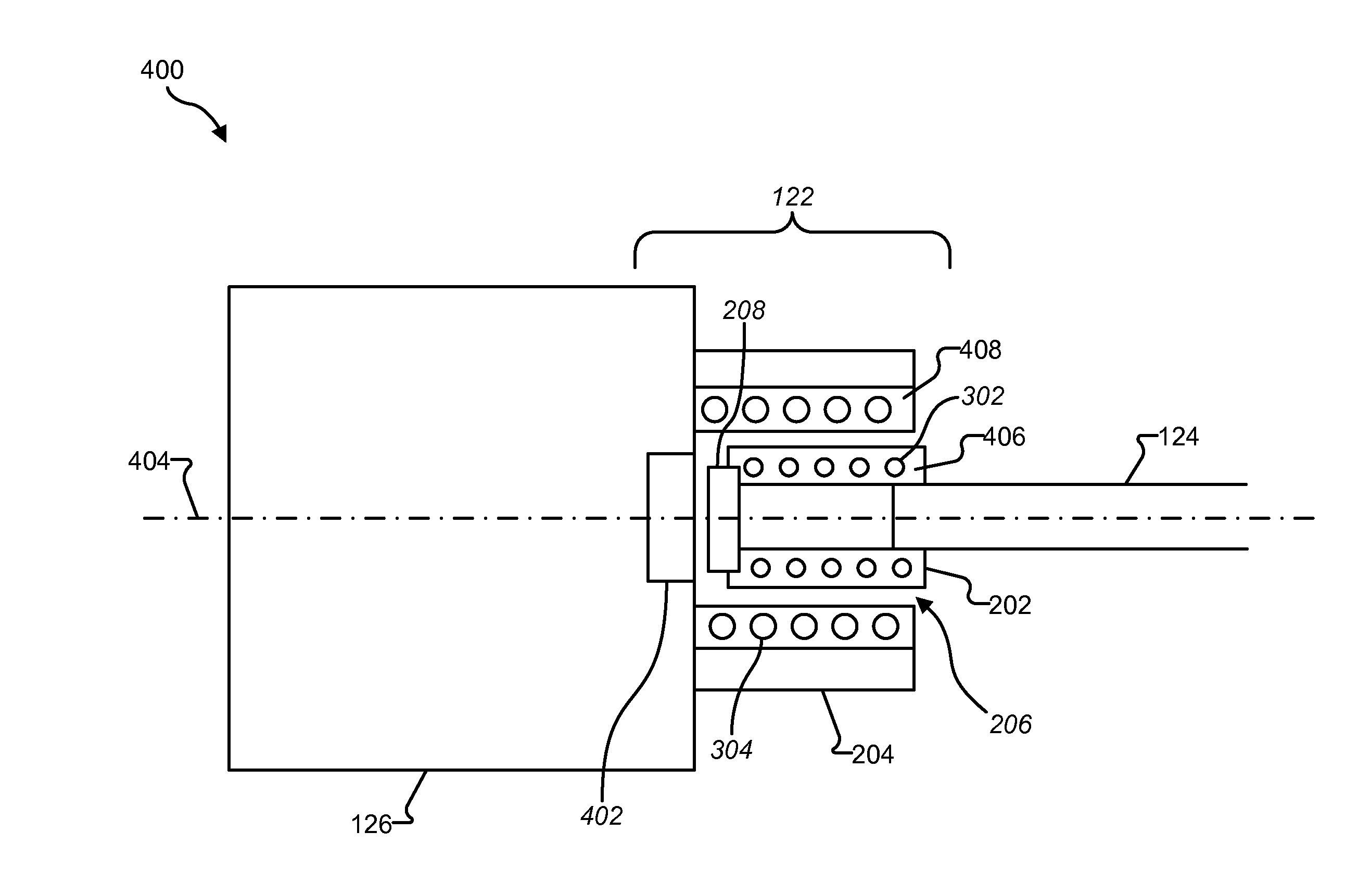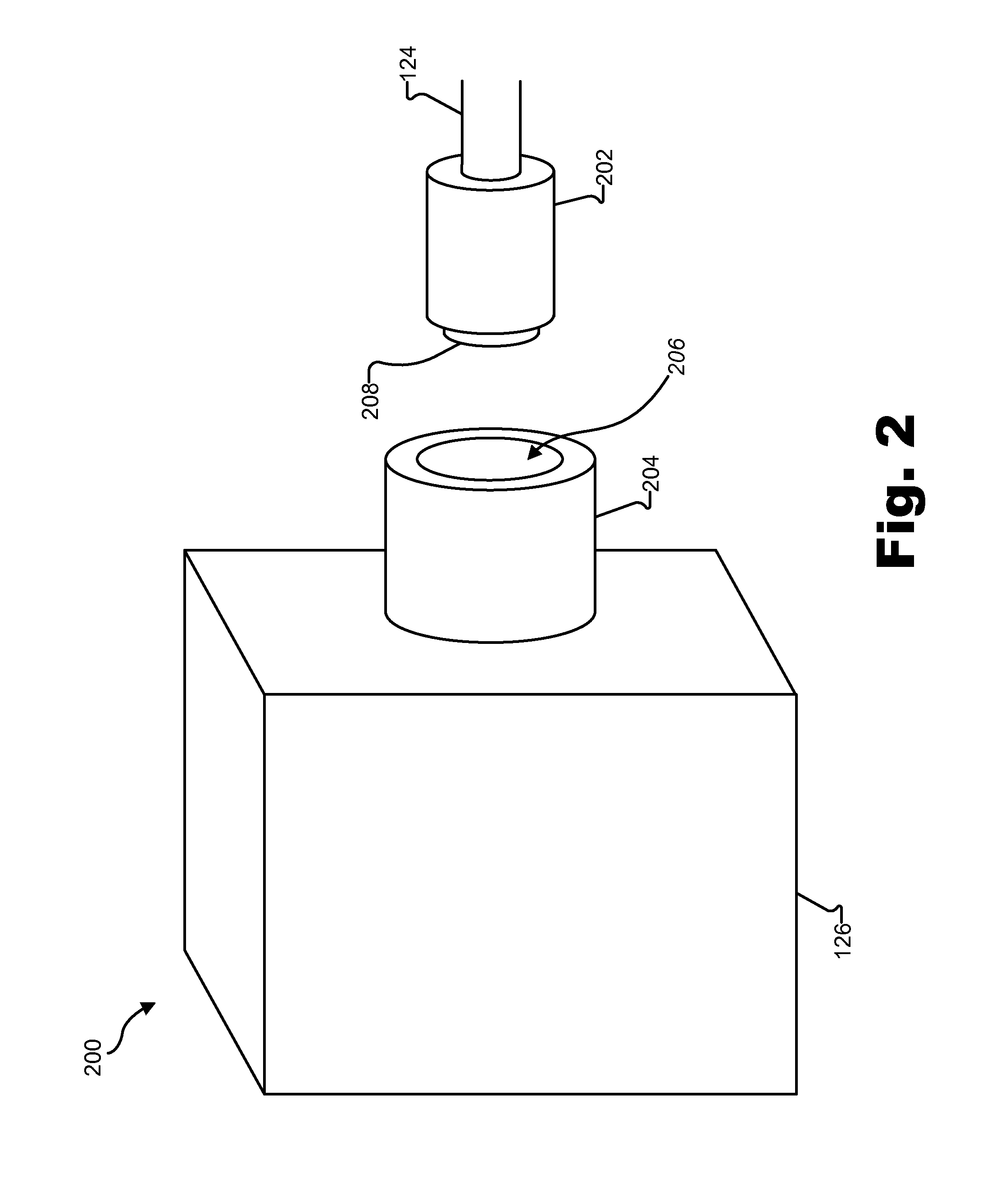Connectorized cochlear implant systems
a cochlear implant and connector technology, applied in the field of cochlear implant systems, can solve the problems of reducing the effectiveness of cochlear implant treatment, affecting the treatment effect, and affecting the treatment effect, and reducing the effect of the patient's hearing
- Summary
- Abstract
- Description
- Claims
- Application Information
AI Technical Summary
Benefits of technology
Problems solved by technology
Method used
Image
Examples
Embodiment Construction
[0007]Connectorized cochlear implant systems and methods are described herein. As will be described in more detail below, a connectorized cochlear implant system may include 1) a cochlear implant module configured to be implanted within a patient and comprising cochlear implant circuitry configured to apply electrical stimulation representative of one or more audio signals to the patient, 2) a first connector assembly coupled to the cochlear implant module and configured to be implanted within the patient, the first connector assembly comprising a first induction coil, 3) an implantable module (e.g., an implantable battery module or an implantable module that includes a sound processor and a battery) configured to be implanted within the patient, and 4) a second connector assembly coupled to the implantable module and configured to be implanted within the patient, the second connector assembly comprising a second induction coil. The first connector assembly may be configured to be r...
PUM
 Login to View More
Login to View More Abstract
Description
Claims
Application Information
 Login to View More
Login to View More - R&D
- Intellectual Property
- Life Sciences
- Materials
- Tech Scout
- Unparalleled Data Quality
- Higher Quality Content
- 60% Fewer Hallucinations
Browse by: Latest US Patents, China's latest patents, Technical Efficacy Thesaurus, Application Domain, Technology Topic, Popular Technical Reports.
© 2025 PatSnap. All rights reserved.Legal|Privacy policy|Modern Slavery Act Transparency Statement|Sitemap|About US| Contact US: help@patsnap.com



